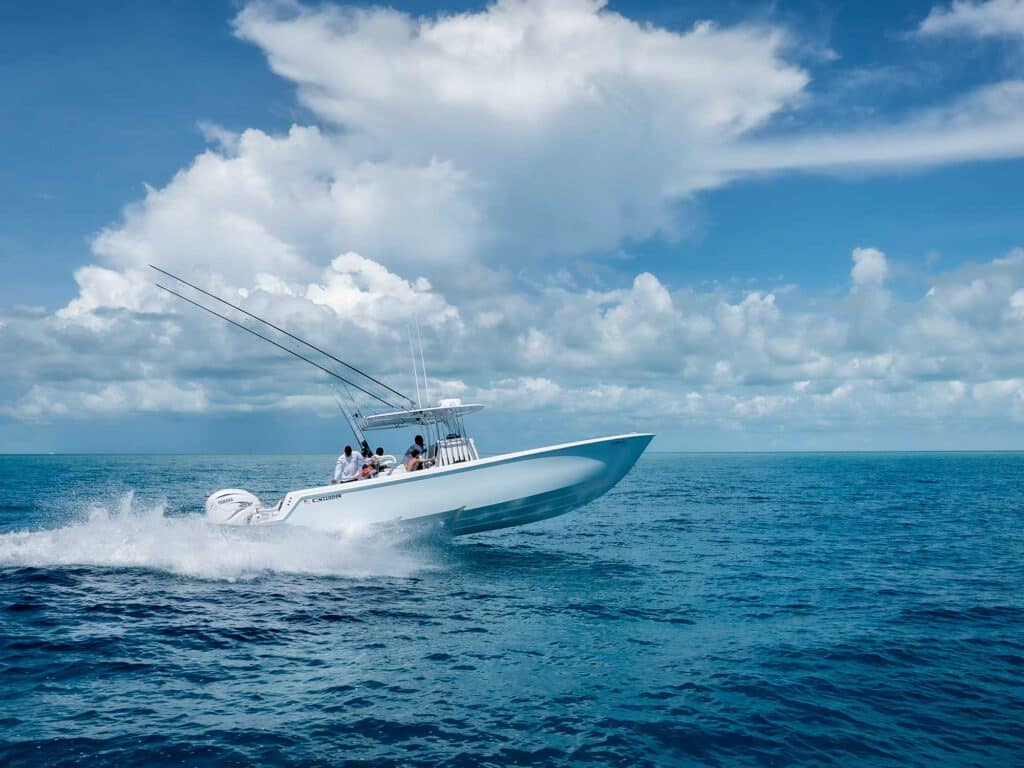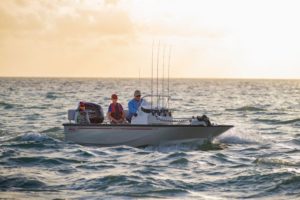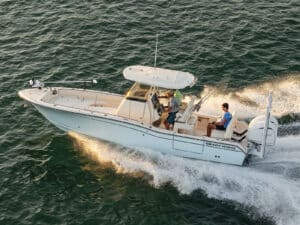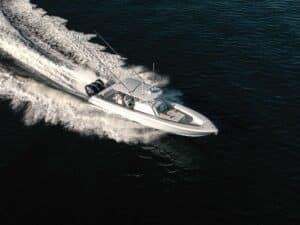
After a stint in the U.S. Coast Guard as a small-boat coxswain and marine-fisheries law enforcement officer, Capt. McMurray founded One More Cast Charters. For the better part of the past two decades, he has been chasing tuna off Long Island’s South Shore, priding himself on his ability to catch tuna using spinning gear—there’s no trolling on his boat. Here’s what he looks for in a boat to run-and-gun some of the fastest fish in the ocean.
Deadrise
“Unlike Cape Cod or the Outer Banks, our tuna generally aren’t close, which means 60- to 80-mile runs in sometimes not-so-nice conditions. The more deadrise you have, the more that boat is going to cut through chop and get you there without pounding. But there’s a Catch-22 here: The greater the deadrise, the more the boat is going to rock at rest. Getting to the tuna grounds without beating my crew to a pulp is more important to me than comfort (rocking and rolling) once we’re on the grounds. So I want a boat with a lot of deadrise, like 24 or 25 degrees of it.”
How Much Beam?
“Of course, deck space is good. But again, there are trade-offs here. The bigger and wider boats are heavy, and that makes approaching or running-and-gunning surface-feeding or waking tuna problematic—it’s kind of hard not to put them down when you’re throwing 4 feet of wake. I generally want 9 to 10 feet of beam. Any more than that, it’s kind of a different boat, better suited for trolling.”
How Many Engines?
“Unless you’re fishing within sight of shore, you want more than one motor. My first offshore boat had twin 150s, which I consider the minimum. Twin 300s are optimal in my opinion. Boats with three engines are often able to get on plane with only two working motors, so you won’t have a long slow ride back to the dock.”
Electronics
“I have 2 kW transducers on all of my offshore boats, with chirp. They all tend to read bottom and fish pretty well. Just remember that your sounder reads only what’s directly beneath you, not what’s around you and on the surface—I’ve caught plenty of fish when we weren’t marking anything. Still, it’s good to have a solid sounder and transducer, if for no other reason than it increases confidence levels, and lets you know, of course, that there are indeed fish around, even if you might not be catching.
“Radar is an absolute necessity. Even if you don’t sail because of fog, you can be 60 miles offshore when the fog unexpectedly rolls in. And of course, if you want to be on the tuna grounds by dawn (the magic hours), you’re going to have to run in the dark. And you really need to be able to see stuff before you hit it, or it hits you. Get radar. It might save your life, and mine.
“Integrating AIS on your chart plotter is important. You can usually do that through a good VHF radio that comes with an AIS transponder. That will help you locate commercial traffic, specifically trawler fleets. I don’t think it’s a big secret that tunas hold around squid and scallop fleets, eating the bycatch.
“While it’s not what I’d call a necessity, FLIR or any other sort of night vision is extremely helpful. I use it, along with radar, and a spotlight. I’ve been doing this long enough to understand that you can’t depend on any of the three really, but all three together greatly reduces the odds of hitting something.”
Other Must-Haves
Rod holders. A lot of them. I have 30 to 40 on each boat. While that sounds like a lot, if you’re serious, you need a wide range of popping and jigging rods for all types of conditions and size classes of fish. I’m talking about vertical rod holders that are not in the gunwales. You need to be able to get to rods quickly if all of the sudden you start marking fish, or if a pod of dolphin show, or if tuna pop up. I don’t want anything in the way of casting when those sudden opportunities occur. I keep jig rods vertically along the port and starboard of the center console, and popping rods in the leaning-post rocket launcher.
“A satellite communicator is a must-have! It allows you to communicate and share intel with your friends and colleagues while underway without blowing up spots on the VHF. And it allows you to communicate with your wife so that she doesn’t call the Coast Guard when you’re 80 miles offshore chasing fish when you were supposed to be home hours ago.”
Creature Comforts
“I don’t know how people fish without bolsters. Sometimes you’re fighting fish for over an hour, and it really helps to be able to lean against a soft bolster. Beanbags are an absolute necessity. They give anglers a place to sleep on the way out and the way back.”









